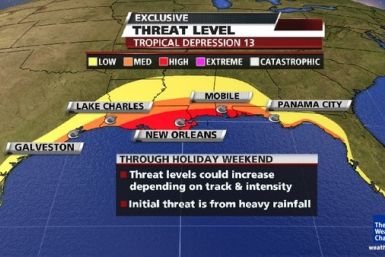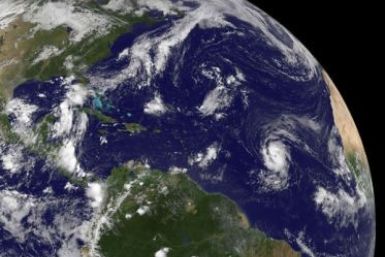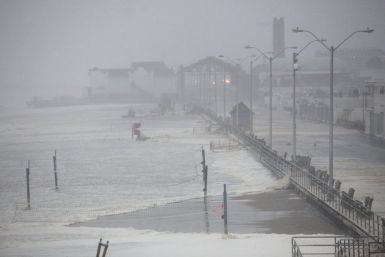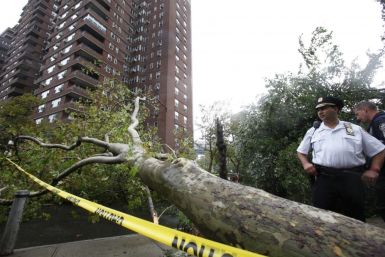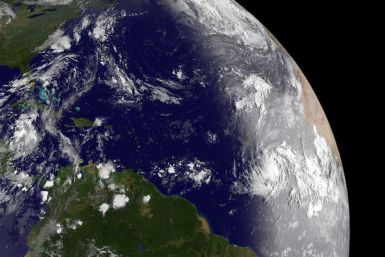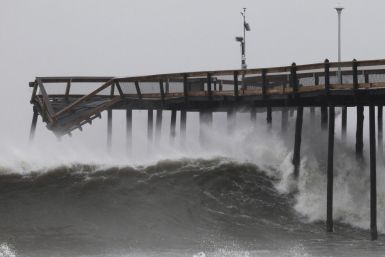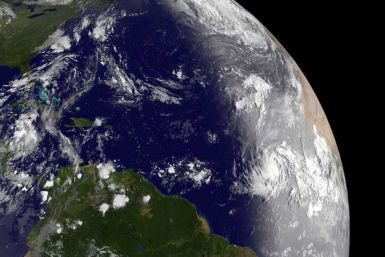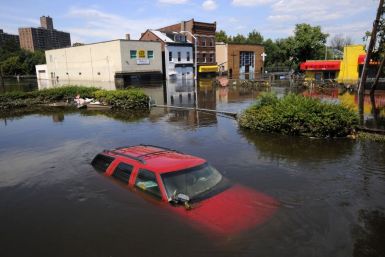Headed towards the Shikoku and Hiroshima regions of the Japan archipelago, Typhoon Talas is the 5th typhoon of the 2011 Pacific Typhoon season.
Brent crude hovered at $114 a barrel Friday, on track for its second consecutive weekly gain, as investors eyed U.S. jobs data for clues on whether the world's largest oil consumer will be able to dodge a recession.
The tropical depression will be called Lee if it upgrades to a tropical storm. It is currently creeping north through the Gulf of Mexico. It could spur torrential rains and coastal flooding from the Florida Panhandle to Texas-Louisiana border, National Hurricane Center Director Bill Read told the media.
Whether Hurricane Katia will have any impact on the United States is still uncertain, but forecasters are keeping a watchful eye on a new tropical threat in the Gulf of Mexico.
It is a mistake to focus just on a hurricane's wind speed. Of the most catastrophic hurricanes in United States history, the majority were so devastating because of the flooding caused by a combination of heavy rainfall and storm surges, not because of the winds themselves.
Prolonged periods of heavy rain from the new tropical storm in the Gulf of Mexico will do little to alleviate severe drought conditions that have plagued the nation's midsection.
29-year old cyclist was killed after swerving out of the way of construction debris
As the chances of a low-pressure system in the Gulf of Mexico turning into a tropical depression in next two days increase and reach around 70 percent, major oil and natural gas companies functioning in the U.S-regulated areas of the Gulf of Mexico have stopped their operations and started evacuating their employees.
Texas has prayed for rain during months-long drought that has escalated in recent weeks with severe heat but the Lonestar state probably didn't want a hurricane to solve the dilemma. Forecasters say, however, that the next hurricane serious hurricane threat to the U.S. may not be Hurricane Katia. A new low-pressure system has developed in the Gulf of Mexico that the National Hurricane Center says is likely to become a tropical cyclone in the next two days before possibly threatening the U.S.,...
If a new tropical storm gains momentum and becomes a hurricane, it could wreak havoc on oil production in the Gulf of Mexico.
One person's savior is another's curse. That's one thing we've learned through history and experience, since good news in one way often means bad news in another -- the balanced scale of life and nature that's often so conflicting and confusing, if not damaging. Such is the case with a developing storm in the Gulf of Mexico, likely to become a tropical cyclone, and eventually a tropical storm and hurricane that will threaten a direct hit on Texas.
The next hurricane serious hurricane threat to the U.S. may not be Hurricane Katia, but a new low-pressure system that developed in the Gulf of Mexico that the National Hurricane Center says is likely to become a tropical cyclone in the next two days. The unnamed storm has a good chance of threatening U.S. states on the northern Gulf Coast -- potentially areas hit by Hurricane Katrina in 2005.
U.S. President Barack Obama ordered federal assistance to supplement a number of storm-battered areas and counties in New Jersey, days after Hurricane Irene hit the entire Eastern seaboard on August 27, 2011.
Tropical Storm Katia is now a Category 1 hurricane, but its impact on the United States, if any, remained unclear as it continued to strengthen on Thursday.
A low pressure located in the central Gulf of Mexico could strengthen into a tropical storm or depression in the next 24 hours as Hurricane Katia churns in the Atlantic.
Now that Hurricane season is in full force, with Irene making the first strike on the U.S. since Ike in 2008 and Hurricane Katia warming up in the Atlantic late this week, it's time to take a crash course. Here are five things to know about a hurricane.
President Barack Obama declared Wednesday a number of towns, cities and counties in New Jersey as major disaster areas and ordered federal assistance to supplement storm-battered areas affected by Hurricane Irene on August 27, 2011, and days after.
Hurricane Katia is likely to become a major storm this weekend, and an eventual threat to the U.S. has not been ruled out. The National Hurricane Center said Thursday Katia, now about 1,000 miles east of St. Lucia in the Carribbean, is on a projected path to be well east of the Bahamas and south of Bermuda by Sept. 6. Katia has winds near 75 miles per hour, and the storm is moving west at 20 miles per hour.
If a new tropical storm gains momentum and becomes a hurricane, it could wreak havoc on oil production in the Gulf of Mexico.
Hurricane Katia is official, as the storm strengthened in the past 24 hours from tropical storm strength. The National Hurricane Center in Miami says Katia, the second hurricane of the 2011 Atlantic season, will likely further strengthen and become a major hurricane by the weekend. The threat that Katia could eventually strike the U.S. remains, through models are uncertain.
Every year tourists gather to watch the soaring tide on the banks of Qiantang River in Haining, eastern China. The tides and waves recorded the highest level in 10 years ahead of Typhoon Nanmadol.
Hurricane Irene may heap billions of dollars of extra costs on the already fragile U.S. economy, but insurance companies are likely to emerge relatively unscathed.











